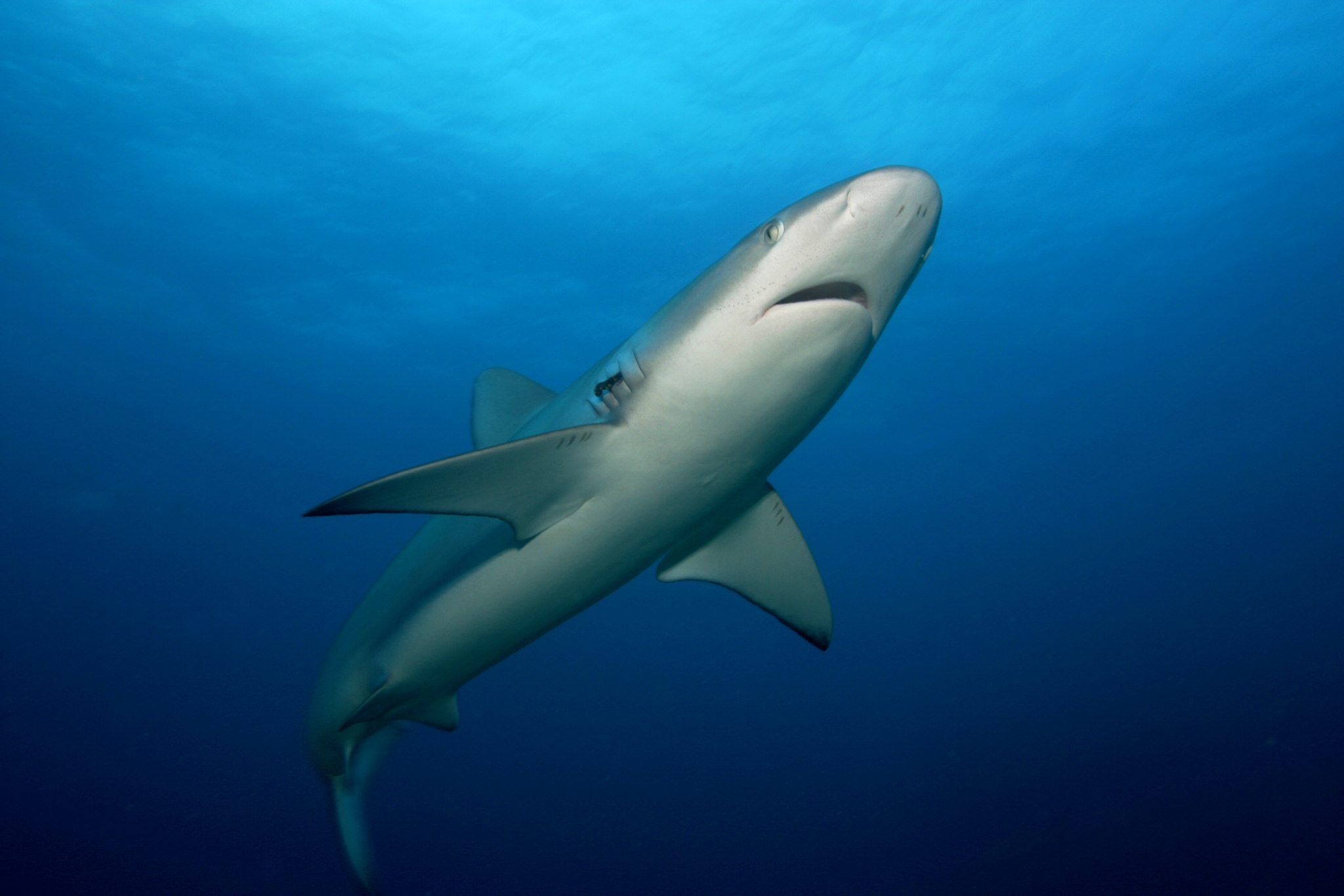
Alison Thompson, communications intern
When you close your eyes and think of a shark what comes to mind? You may picture a massive whale shark swimming in the Gulf of Mexico opening its five-foot wide mouth, or maybe you think of a nurse shark lazily lounging along the ocean floor waiting for its dinner to swim past. Many people picture great whites lunging out of the ocean to capture a wriggling seal fleeing for its life, or a tiger shark speeding through the ocean after an albacore. If any of those images come to mind, you are picturing one of our ocean’s greatest apex predators that contribute to maintaining a healthy ocean environment.

Photo by: Steven K. Webster/Monterey Bay Aquarium
Being an apex predator means sharks are at the top of their food chain and are often not eaten by other animals. As carnivores, sharks eat fish, seals, dolphins, turtles, and other animals beneath them in the food chain. Apex predators play significant roles in our sanctuaries. In California, great white sharks in Greater Farallones, Channel Islands, Monterey Bay, and Cordell Bank National Marine Sanctuaries help maintain fish and seal populations. For our sanctuaries to stay healthy, we need apex predators to balance prey populations. If we have too many fish or seals, the resources the prey use become damaged or scarce from overuse. Sharks keep this from happening by eating the seals and fish that are weak, old, or sick to maintain the fish and seal populations at a healthy number. With the help of sharks, our sanctuary ecosystems are healthier and more diverse.

Photo by: NOAA and Richard Pyle/Bishop Museum 2015
Many people use our sanctuaries for fishing, scuba diving, wildlife watching, and swimming. We need sharks in our sanctuaries to maintain the reefs, grasses, and fish stocks that we rely on for these activities. Sharks are the “park managers” of our ocean’s playgrounds in their role as apex predators. Our sanctuaries are home to many shark species, from swell sharks and tiger sharks to black tip reef sharks, and each sanctuary benefits from their presence. Sanctuary researchers study whale sharks, bull sharks, and great white sharks to understand how their behaviors, migration patterns, and feeding habits affect ecosystems in the sanctuary. In Greater Farallones National Marine Sanctuary, implementation of the White Shark Stewardship Project has helped us protect and conserve the white shark population in the sanctuary which keeps seal populations at sustainable levels.

Photo by: Mark Nadon/NOAA
We need sharks in our sanctuaries to improve diversity and ecosystem health. If you close your eyes again and picture our ocean, hopefully you see more than a jagged-toothed fish with a voracious appetite; hopefully, you perceive sharks as predators that maintain our national marine sanctuaries so we can swim, fish, and dive. For more information on our National Marine Sanctuary System and the sharks in our sanctuaries visit: sanctuaries.noaa.gov.
